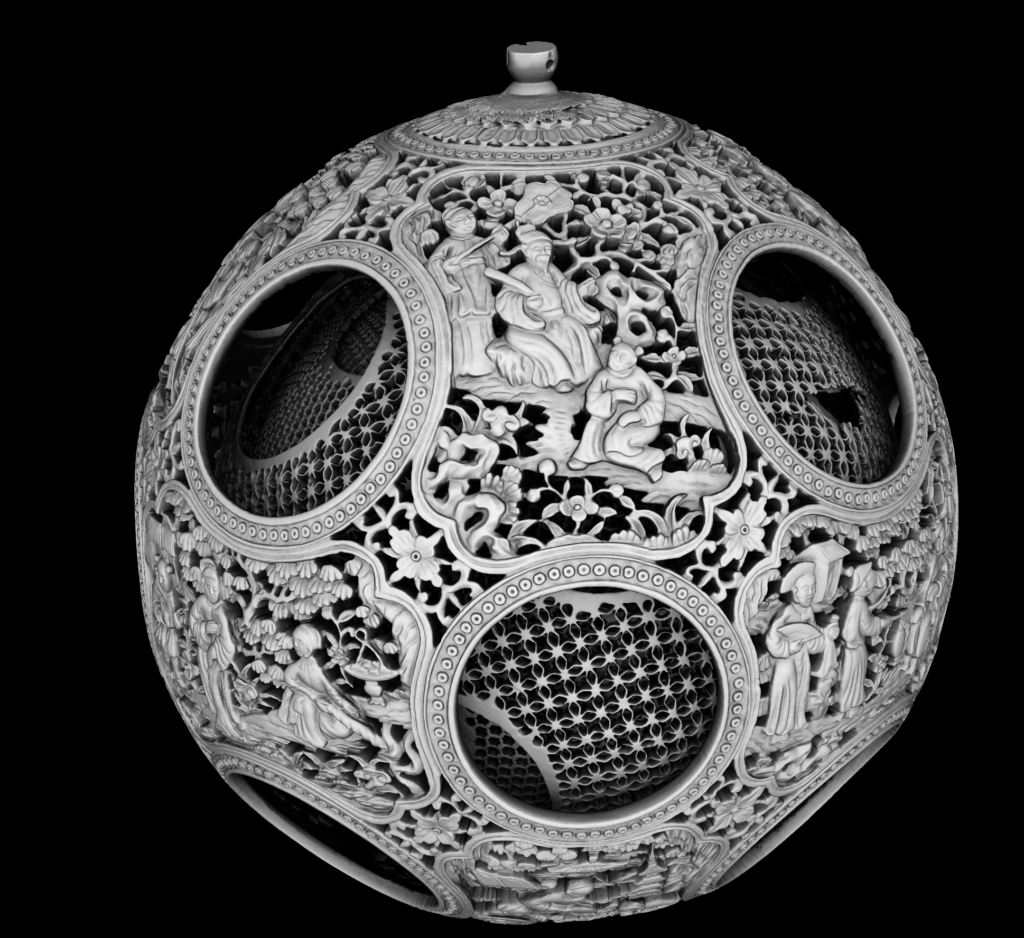Project
Category
Funded by NWO
Multi-year project
CT FOR ART
FROM IMAGES TO PATTERNS
Most objects in the collections of cultural history museums can only be observed from the outside. However, the inside of the objects, which we cannot see, often contains a wealth of information about the making of the objects and their condition. Using 3D scanning techniques, such as CT scanning, these hidden traces can be visualized: finger prints of the maker that can be seen inside the clay, tool marks that tell us about the tools that have been used to craft the object, year rings inside wooden panels that can be used for dating, etc.
The standard 3D scanning techniques have never been developed with these applications in mind, and often yield poor image quality when applied to cultural heritage objects. In the IMPACT4Art project, we will develop novel algorithms and software that will enable us to create accurate 3D images of a broad range of museum objects, making scans within the walls of the museum. The software will automatically detect patterns that provide information about the origin and condition of the object. The work will be carried out in close collaboration between data scientists and experts on the Rijksmuseum collection.

A computer generated image of an ivory Chinese Puzzle ball (Kanton, 1800-1825, Rijksmuseum). CWI’s flexray scanner was used to acquire a 3D image of the ball, and novel algorithms were developed to detect hidden patterns in the data. Image: CWI
- Prof. dr. E. Hermens (Rijksmuseum, University of Amsterdam)
- Prof. dr. R. van Liere (CWI, Eindhoven University of Technology)
- P. van Duin (Rijksmuseum)
- J. van Iperen (Rijksmuseum)
- I. Garachon MA (Rijksmuseum)
- S. Creange Msc (Rijksmuseum)
- F. Bossema, PhD-student (CWI)
- D. Sero, Postdoc researcher (CWI)
PUBLICATIONS
- Francien Bossema, P.J.C. van Laar, K. Meechan, D. O`Flynn. J. Dyer, T. van Leeuwen, S. Meijer, E. Hermens, K.J. Batenburg “Inside out: Fusing 3D imaging modalities for the internal and external investigation of multi-material museum objects”. Digital Applications in Archaeology and Cultural Heritage 31 (2023), e00296
- D. Sero, I. Garachon, E. Hermens, K. J. Batenburg. Artist profiling using micro-CT scanning of a Rijksmuseum terracotta sculpture. Science Advances, 9(38), (2023).
- Marta Domínguez-Delmás, Francien G. Bossema, Jan Dorscheid, Sophia Bethany Coban, Moorea Hall-Aquitania, et al. ‘X-ray computed tomography for non-invasive dendrochronology reveals a concealed double panelling on a painting from Rubens’ studio‘. PLOS ONE 16(8), 2021.
- Francien G. Bossema, Sophia Bethany Coban, Alexander Kostenko, Paul van Duin, Jan Dorscheid, Isabelle Garachon, Erma Hermens, Robert van Liere, K. Joost Batenburg, ‘Integrating expert feedback on the spot in a time-efficient explorative CT scanning workflow for cultural heritage objects‘, Journal of Cultural Heritage, 2021.
- Marta Domínguez-Delmás, Francien G. Bossema, Bieke van der Mark, Alexander Kostenko, Sophia Bethany Coban, Sjoerd van Daalen, Paul van Duin, K. Joost Batenburg, ‘Dating and provenancing the Woman with lantern sculpture – A contribution towards attribution of Netherlandish art‘, Journal of Cultural Heritage, 2021.
- Francien G. Bossema, Domínguez-Delmás, M., Palenstijn, W.J. et al. ‘A novel method for dendrochronology of large historical wooden objects using line trajectory X-ray tomography‘. Sci Rep 11, 11024, 2021.
- Dzemila Sero, Isabelle Garachon, Erma Hermens, Robert Van Liere, and Kees Joost Batenburg, ‘The Study of Three-Dimensional Fingerprint Recognition in Cultural Heritage: Trends and Challenges‘. J. Comput. Cult. Herit. 14, 4, Article 51, 2021.
- Dorscheid, F.G. Bossema, P. van Duin, S.B. Coban, R. van Liere, K.J. Batenburg, G.P. Di Stefano, “Looking under the skin – multi-scale CT scanning of a peculiarly constructed cornett in the Rijksmuseum”, Heritage Science 10, 161(2022)
BLOGPOSTS
- Francien Bossema, ‘Insight in Wood: Dating Wooden Objects with 3D CT Imaging‘, September 2020.
- Adriaan Graas, based on an interview with Francien Bossema, ‘Quest for the Hugo de Groot Book Chest‘, October 2020.
- Francien Bossema, ‘The Interplay between Scientists, Art Historians, Conservators and the General Public‘, May 2021.
- Dzemila Sero, Francien Bossema, and Erma Hermens, ‘Technical Art History Series: Digital Tools for Cultural Heritage: Unlocking Art History‘, May 2021.
- Francien Bossema, Nouchka De Keyser, Dzemila Sero, Erma Hermens, ‘Imaging the Ghent Altarpiece: insights from an interdisciplinary research and restoration project’, June 2021.
- Dzemila Sero, Francien Bossema, Erma Hermens, ‘Making sense of cultural heritage: Single integrated software, why, and how’, June 2021.
- Francien Bossema, Erma Hermens, Dzemila Sero, ‘Imaging 3D space and surround sound’, July 2021.
- Bennie Mols, CWI blog, ‘Cwi Scanner Revealing Art Secrets Seeks New Applications’, February 2022.
PODCASTS
- Francien Bossema and Erma Hermens, CWI Podcast #1, ‘Hoe de FleX Ray scanner kunstgeheimen onthuld‘ (in Dutch). Listen through YouTube or Spotify.
TV BROADCASTS
- Episode of the Dutch TV program ‘Historisch Bewijs’, in collaboration with Joost Batenburg and Francien Bossema, ‘De boekenkist van Hugo de Groot‘, March 2020.
